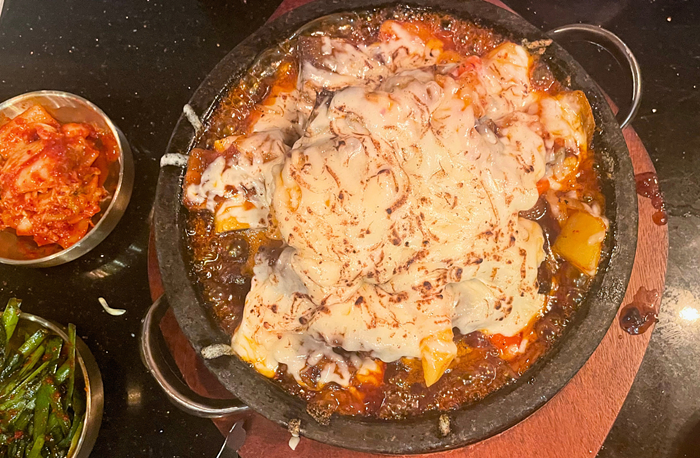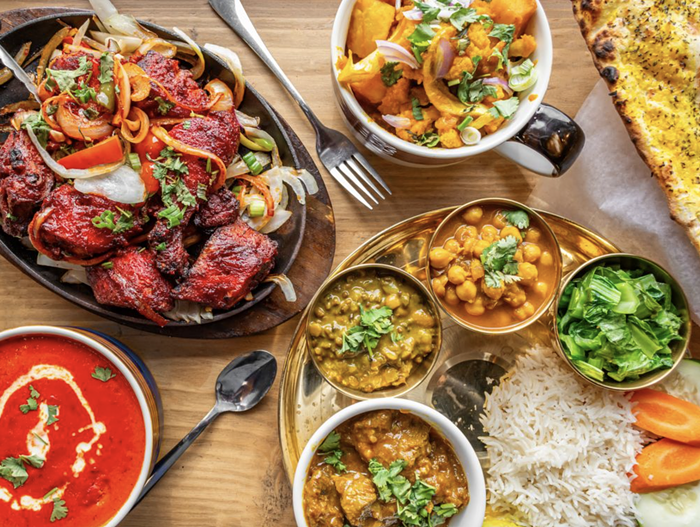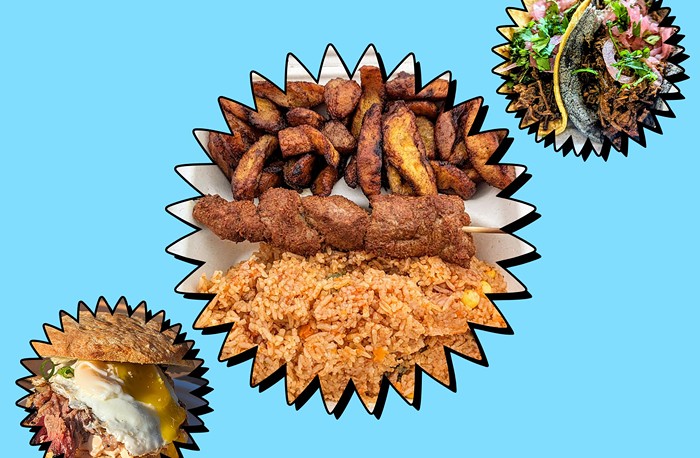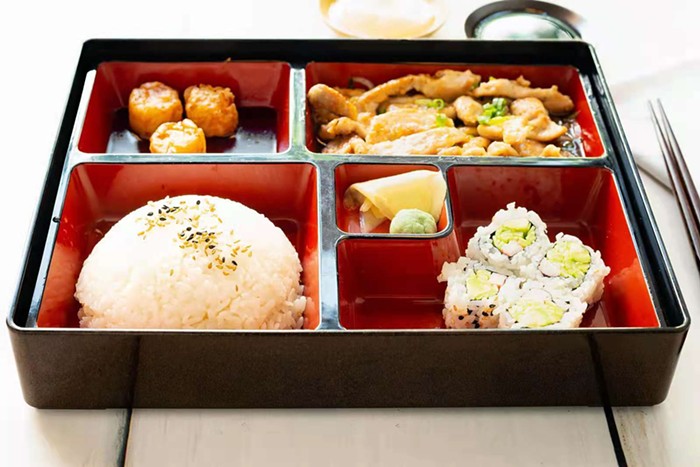When I was a kid, I used to measure a household by its kitchen. It wasn't a conscious judgment, more like an instinct: A crowded and noisy kitchen, the air billowing with heat and smells—like my Southern grandma's or the ones in the Italian family my aunt married into—was instantly relaxing. A cold and underused kitchen—pristine linoleum, crisply dry dish towels, cutting boards that looked like they'd never met a knife—was a warning. A little sloppiness showed signs of life; sterility was not to be trusted. (Years later, I learned that the whole "warm-kitchens/warm-hearts" equation was a desperate cliché. But I can't deny its influence on me, back before I knew what a cliché was.)
The Wandering Goose is long and narrow like a shotgun shack, and it feels like the bustling kitchen of a happy household. Opened last month by Heather Earnhardt, cofounder of the Volunteer Park Cafe, the Goose serves damn good Southern food: Their cheesy grits ($4) are gloriously creamy; the crispy skin on their fried chicken ($13 for a platter) is so well sealed that biting into it releases a small dribble of juice; and their gumbo ($8) is made with a roux so dark, it has the nuanced spice of a good Mexican mole.
The Goose shares a big interior window with Rione XIII, Ethan Stowell's latest Italian restaurant. While Rione looks elegant and grown-up through the glass, the Goose seems made for kids—flour sacks have been sewn into lamp shades, lines from a children's book are stamped onto the tabletops, and Earnhardt has painted a bug and a goose on the walls. The homeyness leans slightly toward preciousness, but it doesn't feel forced—at one brunch a few weeks ago, little girls in galoshes squirmed in their chairs, bluegrass music played over the speakers, and someone in the kitchen yelped out a genuine "yee-haw!"
"Honestly, I opened the place because I was kind of irritated," Earnhardt says in a sweet North Carolina accent that sounds the opposite of irritated. Seattle, she says, has a lack of good Southern cooking, and she "wanted the kind of food I grew up on... I was so over the seriousness that so many restaurants do." She paired up with fellow Carolinian Michael Law, a longtime friend who had been cooking in San Francisco and New Orleans, and got to work. The results combine old-time country cooking with refinement, restraint, and a few surprises.
The pimento macaroni and cheese ($6), for example, comes in a small cast-iron skillet and has a freshness and vitality that you wouldn't expect in a dish made of starch and cream. The cheddar sauce tastes smoked and aged, but the fresh pimento peppers give it a lively bounce. Similarly, the house sawmill gravy ($3.50 for a side) is herby and not too pasty-floury. And the fried-oyster BLT ($11) is lighter than you'd expect—the Wandering Goose doesn't fall for the common misconception that all good Southern food is a prelude to a heart attack—with sweet-and-sour pepper jelly to brighten the combination of bacon, golden-breaded oyster, and slightly browned brioche bread.
You can also have your oysters on one of Earnhardt's fluffy buttermilk biscuits made with flour from Boonville, North Carolina. She used to use a combination of cake flour and all-purpose flour for her biscuits, but ordered some Boonville flour on a whim. It was a revelation. "And I was like, 'oh my god!'" she says. "The flour was so soft and light, I didn't even need to cut it with cake flour."
Earnhardt and Law get many of their best ingredients from back east: heirloom Charleston gold rice (an especially nutty-tasting strain of short rice that Earnhardt says was revived from just a few grains) and little glories called Sea Island peas. At first, they resemble a smaller, redder cousin of the black-eyed pea, but they pop in the mouth with a richer, earthier flavor. (Reezy peezy, the Gullah name of a rice and peas dish from the Sea Islands, is said to be a combination of African cooking and a traditional Italian dish for the feast of St. Mark called rize a beze—some of the early professional rice farmers in the Sea Islands were from Venice.) Earnhardt says the heirloom pea species dates back hundreds of years: "I bet they're the same kind of peas Thomas Jefferson used to eat."
Law focuses on the cooking—breakfast and lunch, with a weekly Friday supper—and Earnhardt does the baking: chocolate-chip cookies with fleur de sel and apple-rosemary hand pies so rich, they taste like they've been fried in butter. Her grandmother was a baker, making wedding cakes in her home kitchen, and would take a young Earnhardt along in the car to deliver her goods. "It was so great to run up to the door and see people so happy," she remembers. "I think that's where I caught the bug." ![]()



















